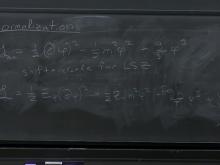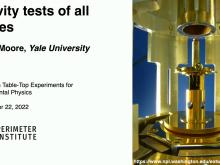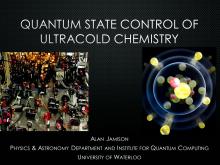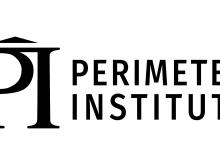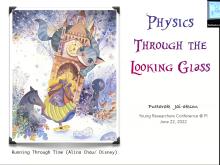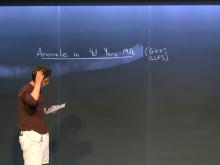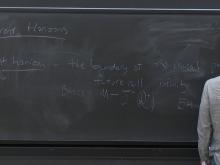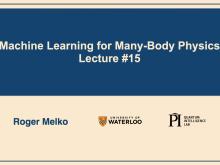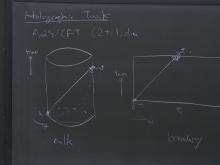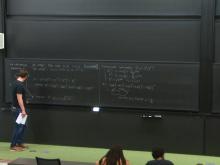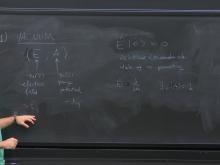Format results
-
14 talks-Collection NumberC22039
Talk
-

Classical Physics - Lecture 220906
PIRSA:22090044 -

Classical Physics - Lecture 220907
PIRSA:22090045 -

Classical Physics - Lecture 220909
PIRSA:22090046 -

Classical Physics - Lecture 220912
PIRSA:22090047 -

Classical Physics - Lecture 220914
PIRSA:22090048 -

Classical Physics - Lecture 220915
PIRSA:22090049 -

Classical Physics - Lecture 220916
PIRSA:22090050 -

Classical Physics - Lecture 220919
Meenu Kumari National Research Council Canada (NRC)
PIRSA:22090051
-
-
Quantum Theory (2022-2023)
14 talks-Collection NumberC22035Talk
-

Quantum Theory - Lecture 220906
Dan Wohns Perimeter Institute for Theoretical Physics
PIRSA:22090032 -

Quantum Theory - Lecture 220907
Dan Wohns Perimeter Institute for Theoretical Physics
PIRSA:22090033 -

Quantum Theory - Lecture 220909
Dan Wohns Perimeter Institute for Theoretical Physics
PIRSA:22090034 -

Quantum Theory - Lecture 220912
Bindiya Arora Perimeter Institute for Theoretical Physics
PIRSA:22090035 -

Quantum Theory - Lecture 220914
Dan Wohns Perimeter Institute for Theoretical Physics
PIRSA:22090036 -

Quantum Theory - Lecture 220916
Dan Wohns Perimeter Institute for Theoretical Physics
PIRSA:22090037 -

Quantum Theory - Lecture 220919
Dan Wohns Perimeter Institute for Theoretical Physics
PIRSA:22090038 -

Quantum Theory - Lecture 220921
Dan Wohns Perimeter Institute for Theoretical Physics
PIRSA:22090039
-
-
School on Table-Top Experiments for Fundamental Physics
27 talks-Collection NumberC22030Talk
-

Welcome & Opening Remarks
-
Asimina Arvanitaki Perimeter Institute for Theoretical Physics
-
Junwu Huang Perimeter Institute for Theoretical Physics
-
Davide Racco ETH Zurich
PIRSA:22090001 -
-

Standard Model & EDM, g-2
Jesse Thaler Massachusetts Institute of Technology (MIT)
-

-

5th forces and astrophysical probes
Peter Graham Stanford University
-

Atom interferometry, atomic clocks
Jason Hogan Stanford Law School - The Bill Lane Centre for the American West
-

Non thermal DM/Misalignment
Giovanni Villadoro The Abdus Salam International Centre for Theoretical Physics (ICTP)
-

Non thermal DM/Misalignment
Giovanni Villadoro The Abdus Salam International Centre for Theoretical Physics (ICTP)
-

Atom interferometry, atomic clocks
Jason Hogan Stanford Law School - The Bill Lane Centre for the American West
-
-
Cold Atom Molecule Interactions (CATMIN)
22 talks-Collection NumberC22028Talk
-

Introduction & Welcoming Remarks
James Shaffer Quantum Valley Ideas Laboratories
-

Perimeter Greeting
Paul Smith Perimeter Institute for Theoretical Physics
-

-

Indirect spin-spin interactions with Rydberg molecules
Hossein Sadeghpour Harvard University
-

-

-

Polyatomic ultralong range Rydberg molecules
Rosario Gonzalez-Ferez University of Granada
-

Observation of linewidth narrowing in EIT polarization spectroscopy involving hot Rydberg atoms with Laguerre Gaussian modes
Luis Marcassa Universidade Estadual Paulista (UNESP)
-
-
QFT for Mathematicians 2022
28 talks-Collection NumberC22011Talk
-

Welcome and Opening Remarks
Kevin Costello Perimeter Institute for Theoretical Physics
-

3d Theories and Twists I
Kevin Costello Perimeter Institute for Theoretical Physics
-

3d Gauge Theory and Elliptic Stable Envelopes I
Andrei Okounkov Columbia University
-

Classical BV Formalism and Topological Quantum Field Theory
Philsang Yoo Seoul National University
-

-

3d B Models and Knot Homology I
Lev Rozansky University of North Carolina at Chapel Hill
-

On Boundary VOA's
Davide Gaiotto Perimeter Institute for Theoretical Physics
-

3d Gauge Theory and Elliptic Stable Envelopes II
Mykola Dedushenko Stony Brook University
-
-
Young Researchers Conference
17 talks-Collection NumberC22027Talk
-

Looking for Quantum-Classical Gaps in Causal Structures
Marina Maciel Ansanelli Perimeter Institute for Theoretical Physics
-

Geometry of Process Matrices
Fionnuala Ni Chuireain Institute of Photonic Sciences (ICFO)
-

Improving 3D Codes under Biased Noise
Eric Huang University of Maryland, College Park
-

General Features of the Thermalization of Particle Detectors and the Unruh Effect.
Tales Rick Perche Perimeter Institute for Theoretical Physics
-

-

Illuminating the pair-instability supernova mass gap with super-kilonovae
Aman Agarwal University of Greifswald
-

Reflecting scalar fields in numerical relativity
Conner Dailey Friedrich Schiller University Jena
-

-
-
Global Categorical Symmetries
34 talks-Collection NumberC22008Talk
-

Welcome and Opening Remarks
Theo Johnson-Freyd Dalhousie University
-

Non-Invertible Symmetries in d>2
Justin Kaidi Stony Brook University
-

Monodromy and derived equivalences
Andrei Okounkov Columbia University
-

Lessons from SU(N) Seiberg-Witten Geometry
Emily Nardoni University of Tokyo
-

Vertex algebras and self-dual Yang-Mills theory
Kevin Costello Perimeter Institute for Theoretical Physics
-

Non-invertible Global Symmetries in the Standard Model
Shu-Heng Shao Stony Brook University
-

Analytic Langlands correspondence over C and R
Pavel Etingof Massachusetts Institute of Technology (MIT)
-

A (kind of) monoidal localization theorem for the small quantum group
Cris Negron University of Southern California
-
-
Quantum Criticality: Gauge Fields and Matter
27 talks-Collection NumberC22009Talk
-

Welcome and Opening Remarks
-
Roger Melko University of Waterloo
-
Emilie Huffman Perimeter Institute for Theoretical Physics
-
Shailesh Chandrasekharan Duke University
-
Ribhu Kaul University of Kentucky
-
-

Blackboard Talk 1 - Virtual
Senthil Todadri Massachusetts Institute of Technology (MIT) - Department of Physics
-

Blackboard Talk 2
Senthil Todadri Massachusetts Institute of Technology (MIT) - Department of Physics
-

-

Reducing the Sign Problem with Complex Neural Networks
Johann Ostmeyer University of Liverpool
-

Self dual U(1) lattice field theory with a theta-term
Christoff Gatringer FWF Austrian Science Fund
-

Quantum electrodynamics with massless fermions in three dimensions - Talk 1
Rajamani Narayanan Florida International University
-

Quantum electrodynamics with massless fermions in three dimensions - Talk 2
Rajamani Narayanan Florida International University
-
-
Strong Gravity (2021/2022)
13 talks-Collection NumberC22025Talk
-
Machine Learning (2021/2022)
14 talks-Collection NumberC22023Talk
-

Machine Learning (2021/2022)
Lauren Hayward Perimeter Institute for Theoretical Physics
PIRSA:22040064 -

Machine Learning (2021/2022)
Lauren Hayward Perimeter Institute for Theoretical Physics
PIRSA:22040066 -

Machine Learning (2021/2022)
Lauren Hayward Perimeter Institute for Theoretical Physics
PIRSA:22040067 -

Machine Learning (2021/2022)
Lauren Hayward Perimeter Institute for Theoretical Physics
PIRSA:22040068 -

Machine Learning (2021/2022)
Lauren Hayward Perimeter Institute for Theoretical Physics
PIRSA:22040069 -

Machine Learning (2021/2022)
Lauren Hayward Perimeter Institute for Theoretical Physics
PIRSA:22040070 -

Machine Learning (2021/2022)
Lauren Hayward Perimeter Institute for Theoretical Physics
PIRSA:22040071 -

Machine Learning (2021/2022)
Lauren Hayward Perimeter Institute for Theoretical Physics
PIRSA:22040072
-
-
Quantum Information and holography (2021/2022)
11 talks-Collection NumberC22021Talk
-

Quantum Information and holography
-
Beni Yoshida Perimeter Institute for Theoretical Physics
-
Aaron Szasz Alphabet (United States)
PIRSA:22040111 -
-

Quantum Information and holography
-
Aaron Szasz Alphabet (United States)
-
Beni Yoshida Perimeter Institute for Theoretical Physics
PIRSA:22040047 -
-

Quantum Information and holography
-
Aaron Szasz Alphabet (United States)
-
Beni Yoshida Perimeter Institute for Theoretical Physics
PIRSA:22040048 -
-

Quantum Information and holography
-
Aaron Szasz Alphabet (United States)
-
Beni Yoshida Perimeter Institute for Theoretical Physics
PIRSA:22040050 -
-

Quantum Information and holography
-
Aaron Szasz Alphabet (United States)
-
Beni Yoshida Perimeter Institute for Theoretical Physics
PIRSA:22040051 -
-

Quantum Information and holography
-
Aaron Szasz Alphabet (United States)
-
Beni Yoshida Perimeter Institute for Theoretical Physics
PIRSA:22040052 -
-

Quantum Information and holography
-
Aaron Szasz Alphabet (United States)
-
Beni Yoshida Perimeter Institute for Theoretical Physics
PIRSA:22040053 -
-

Quantum Information and holography
-
Aaron Szasz Alphabet (United States)
-
Beni Yoshida Perimeter Institute for Theoretical Physics
PIRSA:22040054 -
-
-
Cosmology (2021/2022)
14 talks-Collection NumberC22024Talk
-

Cosmology (2021/2022)
-
Kendrick Smith Perimeter Institute for Theoretical Physics
-
Gang Xu Perimeter Institute for Theoretical Physics
PIRSA:22040076 -
-

Cosmology (2021/2022)
-
Kendrick Smith Perimeter Institute for Theoretical Physics
-
Gang Xu Perimeter Institute for Theoretical Physics
PIRSA:22040077 -
-

Cosmology (2021/2022)
-
Kendrick Smith Perimeter Institute for Theoretical Physics
-
Gang Xu Perimeter Institute for Theoretical Physics
PIRSA:22040078 -
-

-

Cosmology (2021/2022)
-
Kendrick Smith Perimeter Institute for Theoretical Physics
-
Gang Xu Perimeter Institute for Theoretical Physics
PIRSA:22040080 -
-

Cosmology (2021/2022)
-
Kendrick Smith Perimeter Institute for Theoretical Physics
-
Gang Xu Perimeter Institute for Theoretical Physics
PIRSA:22040079 -
-

Cosmology (2021/2022)
-
Kendrick Smith Perimeter Institute for Theoretical Physics
-
Gang Xu Perimeter Institute for Theoretical Physics
PIRSA:22040082 -
-

Cosmology (2021/2022)
-
Kendrick Smith Perimeter Institute for Theoretical Physics
-
Gang Xu Perimeter Institute for Theoretical Physics
PIRSA:22040083 -
-
-
Classical Physics (2022/2023)
14 talks-Collection NumberC22039This is a theoretical physics course that aims to review the basics of theoretical mechanics, special relativity and classical field theory, with the emphasis on geometrical notions and relativistic formalism.
-
Quantum Theory (2022-2023)
14 talks-Collection NumberC22035This course on quantum mechanics is divided in two parts:
The aim of the first part is to review the basis of quantum mechanics. The course aims to provide an overview of the perturbation theory to handle perturbations in quantum systems. Time evolution of quantum systems using the Schrodinger, Heisenberg and interaction pictures will be covered. Basics of quantum statistical mechanics for distinguishable particles, bosons, and fermions will be covered. A brief overview of density matrix approach and quantum systems interacting with the environment will be given.
The second part of the course is an introduction to scalar quantum field theory. The Feynman diagram technique for perturbation theory is developed and applied to the scattering of relativistic particles. Renormalization is briefly discussed. -
School on Table-Top Experiments for Fundamental Physics
27 talks-Collection NumberC22030This School aims at bringing together graduate students and junior postdocs, both theorists and experimentalists, who are interested in proposing and realizing new table-top experiments to test fundamental physics. The goal is to allow them to interact and learn from each other, forming a community.
The School will consist of some theoretical lectures for experimentalists, and experimental lectures for theorists. The scope is to offer basic and relevant notions of each field to physicists with a different background, in order to fill some of the gaps of the respective academic curricula.
The theoretical lectures will cover a review of the Standard Model with emphasis on precision tests, such as the search of new long-range forces and of electrical dipole moments. Another main topic will be a focused introduction on Dark Matter, looking at its cosmological production mechanisms, its impact on astrophysics and cosmology, and its laboratory detection.
On the experimental side, the School will cover a range of techniques for probing weak electromagnetic fields, short distance forces, single photons, fundamental electric dipole moments, as well as atom interferometers and optomechanical sensors.Territorial Land Acknowledgement
Perimeter Institute acknowledges that it is situated on the traditional territory of the Anishinaabe, Haudenosaunee, and Neutral peoples.
Perimeter Institute is located on the Haldimand Tract. After the American Revolution, the tract was granted by the British to the Six Nations of the Grand River and the Mississaugas of the Credit First Nation as compensation for their role in the war and for the loss of their traditional lands in upstate New York. Of the 950,000 acres granted to the Haudenosaunee, less than 5 percent remains Six Nations land. Only 6,100 acres remain Mississaugas of the Credit land.
We thank the Anishinaabe, Haudenosaunee, and Neutral peoples for hosting us on their land.
-
Cold Atom Molecule Interactions (CATMIN)
22 talks-Collection NumberC22028In the first edition of the meeting, CATMIN (Cold ATom Molecule INteractions) was a new satellite meeting of ICPEAC devoted to the study of atomic and molecular systems, where long-range interactions and the extreme properties of highly excited electrons produce new physics and lead to new technologies. CATMIN's objective is to strengthen the links between cold atom physics, molecular physics, chemistry and condensed matter physics, so that new concepts and breakthroughs can emerge. Ions, atoms and molecules are naturally made quantum systems that can be controlled with light and low frequency electromagnetic fields, thus lending themselves to precision investigations and use in quantum technologies. The second CATMIN conference will be held a few days before the ICAP, which is a major conference in AMO physics, with the idea that scientists can attend both meetings. The CATMIN meeting will be a two-day conference held at the Perimeter Institute in Waterloo, ON, centered on Rydberg-atom physics, cold ion physics and the interplay between these experimental platforms. Rydberg atom physics is experiencing a renaissance due to the application of the exaggerated properties of highly excited atoms for quantum information and quantum simulation. Rydberg states can even be observed in solids which is a subject of increasing interest. Cold ions, similarly, are exciting for quantum simulation and computing, becoming one of the central platforms in the race to build a quantum computer. Many exciting developments are also in progress in the area of cold-molecules. Long-range interactions open up fields of research such as the photo-association of cold atoms to form ultra-cold molecules, and the excitation of Rydberg molecules demonstrating novel kinds of molecular bonding. Strong long-range interactions in all the systems permit the investigation of the few-body and many-body regimes, including the few- to many-body transition. The conference aims to share the latest developments and results in these exciting fields among the various ICAP communities as well as the broader physics and chemistry communities. Overall, the conference can forward quantum science and the application of quantum science, which furthers these fields of research by concentrating interest to attract people and resources to the field.
Sponsorship for this event has been provided by:

Perimeter Institute will make every effort to host the conference as an in-person event. However, we reserve the right to change to an online program to align with changes in regulations due to the COVID-19 pandemic.
Territorial Land Acknowledgement
Perimeter Institute acknowledges that it is situated on the traditional territory of the Anishinaabe, Haudenosaunee, and Neutral peoples.
Perimeter Institute is located on the Haldimand Tract. After the American Revolution, the tract was granted by the British to the Six Nations of the Grand River and the Mississaugas of the Credit First Nation as compensation for their role in the war and for the loss of their traditional lands in upstate New York. Of the 950,000 acres granted to the Haudenosaunee, less than 5 percent remains Six Nations land. Only 6,100 acres remain Mississaugas of the Credit land.
We thank the Anishinaabe, Haudenosaunee, and Neutral peoples for hosting us on their land.
-
-
-
-
Quantum Criticality: Gauge Fields and Matter
27 talks-Collection NumberC22009Quantum Criticality: Gauge Fields and Matter -
Quantum Gravity (2021-2022)
13 talks-Collection NumberC22022Topics will include (but are not limited to): Canonical formulation of constrained systems, The Dirac program, First order formalism of gravity, Loop Quantum Gravity, Spinfoam models, Research at PI and other approaches to quantum gravity. -
Strong Gravity (2021/2022)
13 talks-Collection NumberC22025This course will introduce some advanced topics in general relativity related to describing gravity in the strong field and dynamical regime. Topics covered include properties of spinning black holes, black hole thermodynamics and energy extraction, how to define horizons in a dynamical setting, formulations of the Einstein equations as constraint and evolution equations, and gravitational waves and how they are sourced. -
Machine Learning (2021/2022)
14 talks-Collection NumberC22023This course is designed to introduce modern machine learning techniques for studying classical and quantum many-body problems encountered in condensed matter, quantum information, and related fields of physics. Lectures will focus on introducing machine learning algorithms and discussing how they can be applied to solve problem in statistical physics. Tutorials and homework assignments will concentrate on developing programming skills to study the problems presented in lecture. -
Quantum Information and holography (2021/2022)
11 talks-Collection NumberC22021Topics will include (but are not limited to): - Quantum error correction in quantum gravity and condensed matter - Quantum information scrambling and black hole information - Physics of random tensor networks and random unitary circuits

